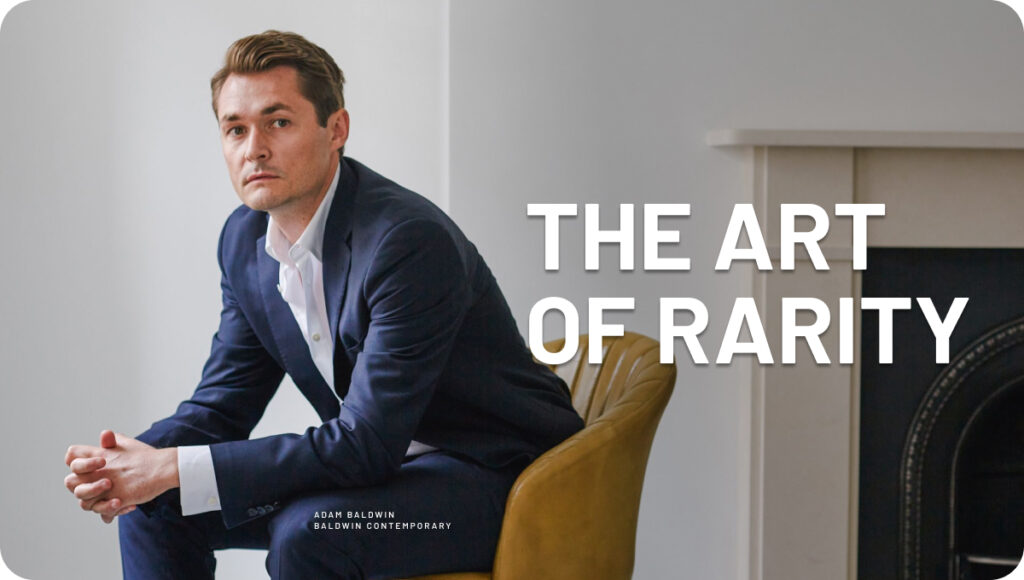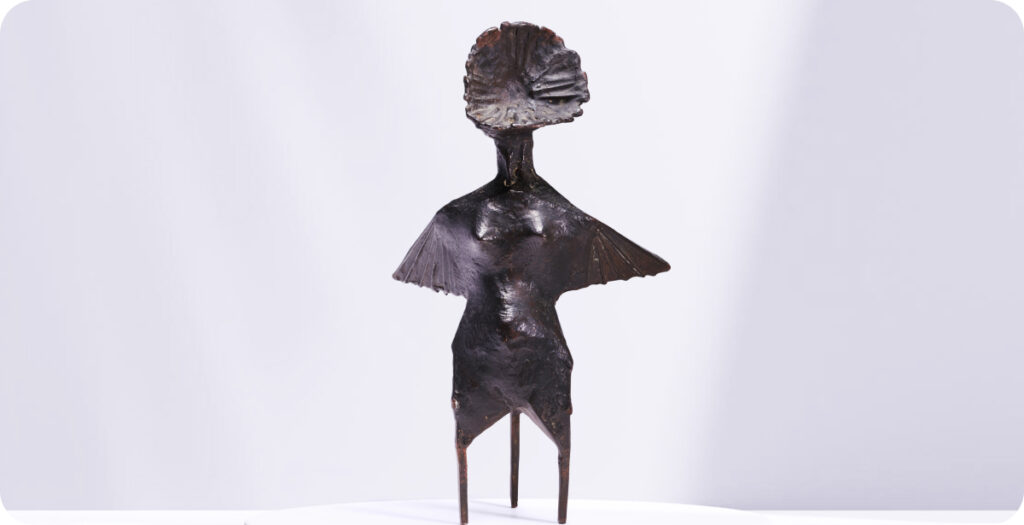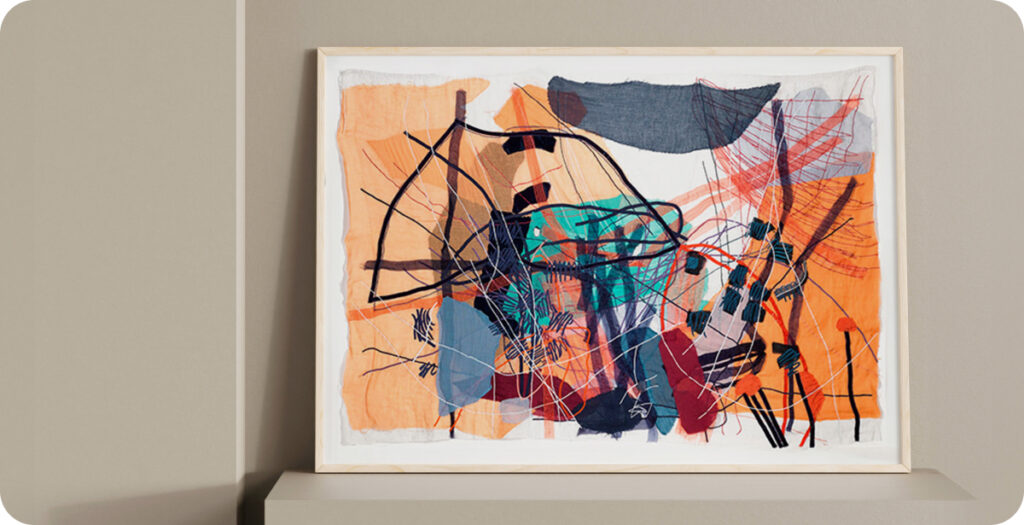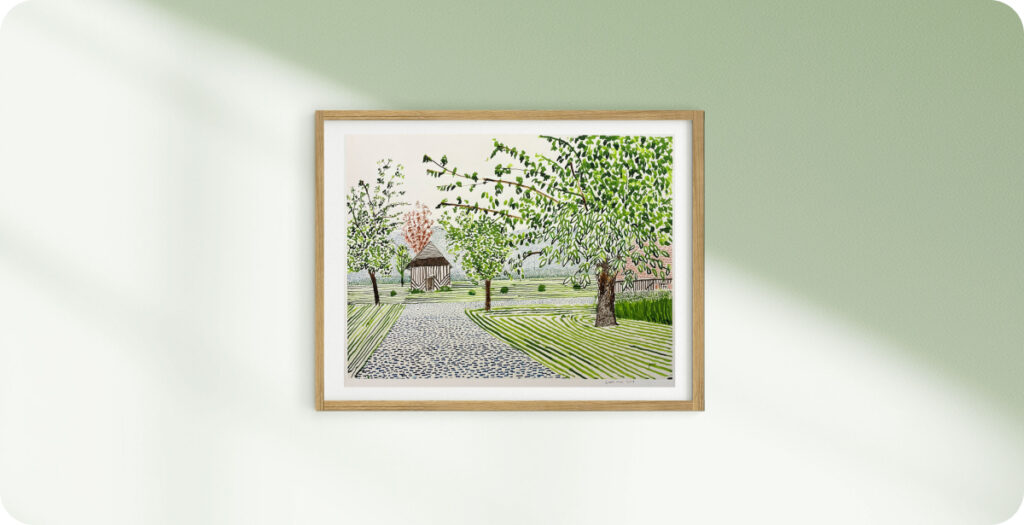
Baldwin Contemporaryhas become one of the most respected names in post-war and contemporary art. Founded in London by Adam Baldwin in 2018, the gallery now operates internationally from London, Miami, and Dubai. As one of our earliest partners in the Timeless Marketplace, they bring expertise and access to exceptional artworks directly to you.
We spoke with Adam about the evolution of Baldwin Contemporary, the shifts in today’s art market, and what makes a work truly investment-grade for collectors — and for Timeless investors.
Adam: I’ve always loved collecting, and I’ve always been fascinated by rarity. The ability of an artist to transform something ordinary into a piece of historical significance feels almost godlike when you think about it.
Baldwin Contemporary started very organically. I simply enjoyed handling and dealing important works of fine art. That’s still the core of what we do. Over time, our collectors became more international, and we adapted accordingly. Now we operate from London, Miami, and Dubai, which helps us serve a truly global client base focused on secondary market sales at the top end of the market.
Adam: Lynn Chadwick is one of the most underappreciated post-war sculptors in my view. We held a solo show of his work in 2024 that drew major interest. It’s been exciting to see younger collectors now moving toward his work. Looking at the secondary market, his auction record currently stands at $3.3M (‘Jubilee IV’ – Christies, 2023), and I’m aware of a couple of other works placing privately for higher than this.
I’m also watching the 1990s Young British Artists such as Gavin Turk, Sarah Lucas, Angus Fairhurst, Gary Hume. They shaped an entire movement, yet the market hasn’t fully priced their influence in. To me, that’s a good buying opportunity and with time, people will look back on today and realise just how cheap some of these works were available for.

Adam: We’ve definitely seen more young people getting into fine art over the past few years, especially since 2019. A key driver of this has been largely to do with digital platforms and social media, which enables access to both galleries and artists. These platforms provide greater levels of information, transparency and discovery in general.
A direct impact of this has been the huge rise in activity in the ultra-contemporary sector, with prices at one point a couple of years ago going to sky-high levels for some of the most sought after names. We had good quality Warhol canvases in stock that were taking longer to sell than a freshly painted work by an artist straight out of grad school. It was not sustainable.
That said, some exceptional artists have also emerged from the ultra contemporary sector over the past few years. Flora Yukhnovich, Sabine Moritz, Julie Mehrutu, Jade Fadojutimi and Nicolas Party remain firmly on my radar.

Adam: Whether you’re looking at emerging or established artists, there are always clues that the market is shifting. The art market is a balance of visibility, scarcity, critical recognition, and collector confidence.
It’s never an exact science, but good signs include when the right collectors start buying the work, artists secure solo shows at respected institutions, their gallery representation evolves, they’re featured in notable publications and, of course, when secondary market activity begins to pick up.
My advice to collectors, fractional or traditional, is simple: whenever possible, go see the art in person. Understand the artist, the context, the emotion behind the work. And never follow the hype. Do your research. Visit studios, fairs, exhibition openings. Talk to artists, dealers, and other collectors who share your passion. Read widely, but only take advice from people whose judgment you truly trust.
For the fractional ownership model in particular, I’d highlight the sub-$250,000 segment. It’s a sweet spot where liquidity is stronger, the buyer pool is wider, and due diligence is more straightforward. Within that range, I consider artists like Lynn Chadwick or Clyde Hopkins to represent excellent value right now: historically significant, but still trading below where they should be.

Adam: Our team works closely with the Timeless Asset Managers to identify pieces from our programme that could suit the model of fractional investing.
When we evaluate a work for Timeless, we look for four key things: rarity, liquidity, attractive pricing relative to the market, and strong potential for future growth. If those boxes are ticked, it’s a solid starting point.
We often focus on artists with deep, established secondary markets — names like David Hockney, Wassily Kandinsky, Picasso, or Marc Chagall. But we’re equally interested in works with rising potential, such as Flora Yukhnovich, Julie Mehretu, or Nicolas Party.
Adam: We’re really excited about this one. David Hockney is one of the greatest artists of the past century, and this piece has never been seen at auction — in fact, it’s rarely been shown outside of museums and institutions.
It comes from Hockney’s Normandy series, one of the most distinctive periods of his later career. In these works, he captures the rhythm of the seasons and the charm of the French countryside with luminous colours and a bold use of digital tools, famously using his iPad as a new kind of canvas.
Hockney’s print market is incredibly strong: over 90% of his auction sales since 2015 have been prints and editions. Prices for similar works have been rising and the current drop price comes with a sizable discount to market benchmarks. It’s an unique opportunity for Timeless investors.

David Hockney
“Study of the Entrance”, 2019